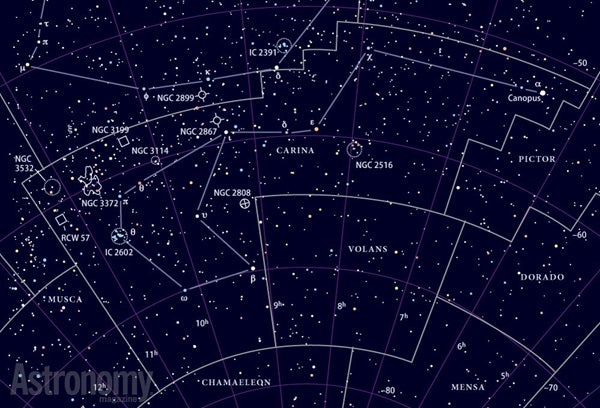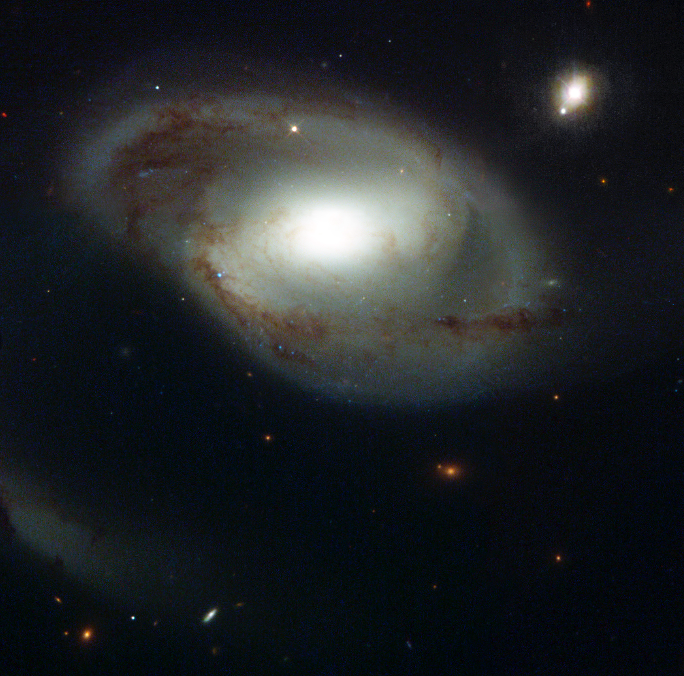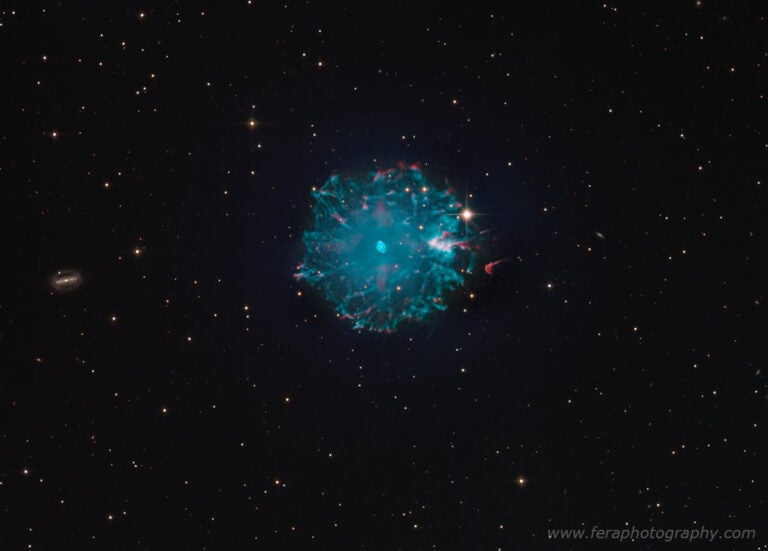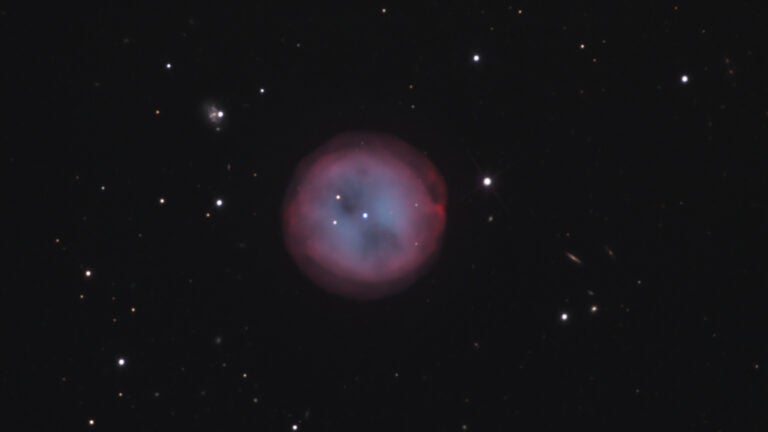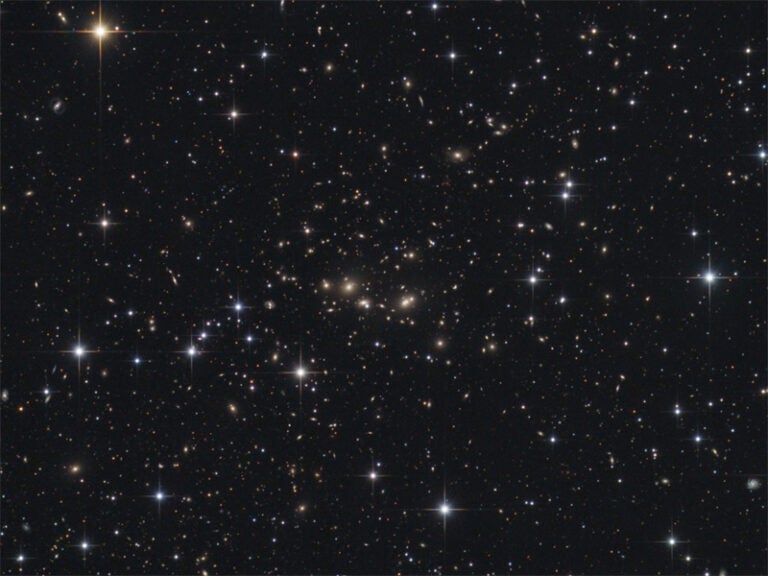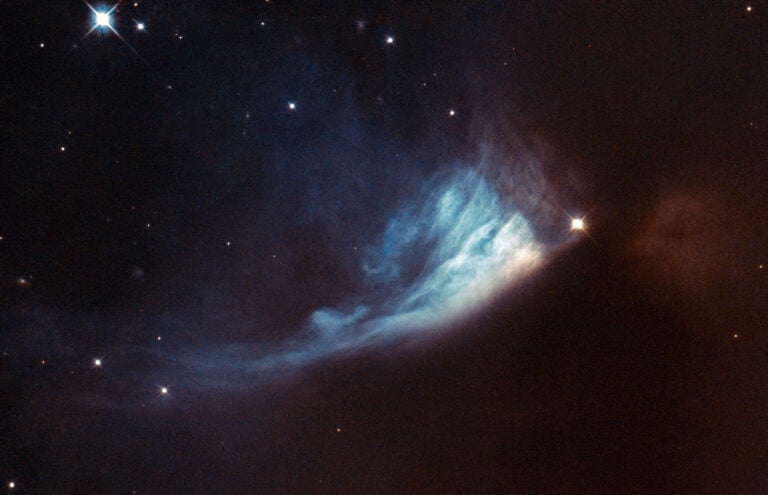Targets for March 31–April 7, 2016
Small telescope: Double star 54 Leonis
Large telescope: Spiral galaxy NGC 3198
Large telescope: Emission nebula NGC 3199
What hue do you view?
This week’s small-telescope target is one of Leo the Lion’s best double stars — 54 Leonis. To find it, point your telescope 6° northwest of magnitude 2.6 Zosma (Delta [δ] Leonis). The double star sits right on Leo’s border with Leo Minor.
You’ll love the color contrast here. Most observers see the magnitude 4.5 primary as off-white and the magnitude 6.3 secondary as deep blue. Some amateur astronomers, however, have reported the primary as a pale or robin’s-egg blue. Whatever hue you see, even a 3-inch telescope will separate the two stars, which lie 6.5″ apart.
Bear-y good spiral
This week’s first large-scope object is spiral galaxy NGC 3198 in Ursa Major the Great Bear.
This object lies 2.7° north of magnitude 3.5 Tania Borealis (Lambda [λ] Ursae Majoris). It glows at magnitude 10.2 and measures 8.5′ by 3.3′.
Through a 6-inch telescope, you’ll see an irregularly illuminated oval that appears more than twice as long as it is wide oriented northeast to southwest. A 14-inch scope at 300x shows lots of detail. A small, bright central region lies within an irregular halo that looks like truncated spiral arms. Only 2′ north of the northeastern tip lies the magnitude 11.2 star GSC 3435:470.
The “C” in Carina
This week’s second large-telescope target is one some of you might have to travel south to see. It’s emission nebula NGC 3199 in the constellation Carina the Keel.
Look for this target 4.4° southeast of magnitude 3.5 Phi (φ) Velorum. It spans 20′ by 15′. Through most telescopes, this nebula looks like a large, thick crescent that opens toward the east. Use a nebula filter for the best view.
Only the largest amateur instruments show some of the additional nebulosity that fills in a roughly circular shape. Near the crescent’s center lies the Wolf-Rayet star HD 89358, a massive, hot sun that generates lots of ultraviolet radiation and an intense stellar wind. In this case, the Wolf-Rayet star is sculpting out the gas surrounding it.
Expand your observing at Astronomy.com
The Sky this Week
Get a daily digest of celestial events coming soon to a sky near you.
Observing Basics
Find more guidance from Senior Editor Michael E. Bakich with his Observing Basics video series.

